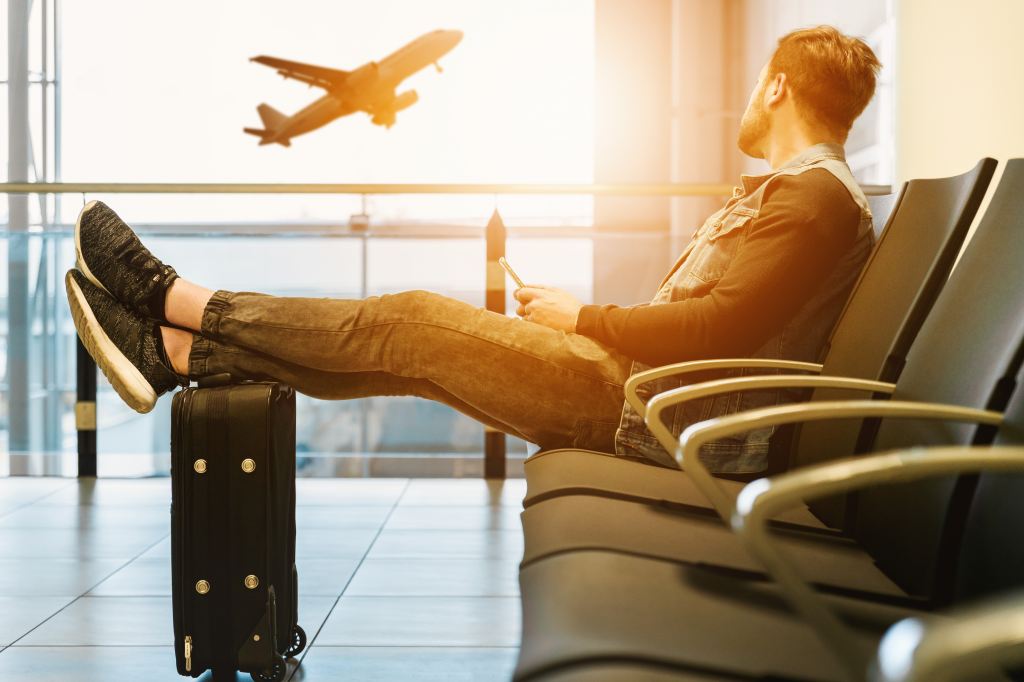In a website focused on rail and sea travel, it might surprise you to discover a post about dealing with jet lag. However, the reality is that any traveler, even a train lover, is bound to fly at some point.
Some leisure travelers, especially those with extra time on their hands, may not be as concerned about jet lag symptoms. But both business travelers and holiday seekers can benefit from my best practical tips, collected and perfected over five decades of air travel, adding more productivity, less stress and more fun to their trip. Buckle your seatbelts!
5. Study your flight times. Before packing, take a few minutes to review your air travel itinerary, noting the total hours of flying time, length of any layovers and how many time zones you will be crossing. Also note the local time of day you are departing and arriving, as that is key to planning against jet lag. Some long-haul flights, if traveling on a north-south route, may cross few if any time zones, meaning jet lag will be minimal. However, many long flights, especially transoceanic or transcontinental flights, will cross multiple time zones, meaning jet lag effects will multiply. Another important distinction is the direction of the flight, as in my experience eastbound flights are much harder to adjust to than westbound. Knowing what you have in front of you will help you apply the remaining tips more effectively.
4. Watch what you eat and try the “jet lag diet.” The stomach is easier to fool than the brain, so be careful about eating on airplanes just because free food is served. In fact, I usually skip the evening meals on planes as they tend to be served much later than a normal eating time, especially if you first set your watch forward to the destination time. Breakfast, though, is usually important to help adjust your “stomach time” to the new location sooner.
The “jet lag diet” is ideal for eastbound overnight flights. Simple to understand, but hard to do, you must avoid all food, caffeine and alcohol on the day of travel and instead drink only water, juice or non-caffeinated soft drinks. Rest and relax onboard (read, watch a movie, sleep), as you will naturally be more tired after fasting from food during the day. Do make sure to have breakfast before landing, as this morning meal will help reset your body clock to the new time zone.

3. Pack a small “sleep kit.” I always carry a small pouch in my carry-on luggage with an inflatable neck pillow, earplugs, eye mask, earphones and melatonin (or other natural sleep aid pills). I’ve even managed to find a two-sided red and green eye mask stating “do not disturb” or “wake me for meals” in multiple languages. You can also make a small sticker (like used for temporary name tags) and handwrite a message for the flight attendants. Another tip – before going to sleep, buckle your seat belt over the top of your blanket and place the “wake me for breakfast” sticker on top so you won’t be awakened if the “fasten seat belt” light comes on during turbulence.
2. Reset your body clock to the new time zone ASAP. This process should start even before you take off. After boarding, immediately set your watch to the new time zone and adjust your mealtime and sleep pattern accordingly. If traveling east, it will often mean skipping dinner and going right to sleep – make sure you wake up for breakfast, though! If westbound, it may mean an enjoyable time of staying awake watching movies, reading and enjoying meals. After landing, try to quickly adjust to the new local day’s rhythm. If morning or daytime, take a walk or jog outside to get some fresh air and sunlight. If evening or night, just begin your bedtime routine and sleep as normal (a melatonin pill can also help you sleep when you aren’t yet feeling tired).
1. Take the train or boat! Crossing a continent by train or ocean by ship, rather than by plane, is an altogether completely different experience. As our world becomes smaller, more tightly connected and regretfully more hectic, these traditional modes of long-distance travel have almost been forgotten. But fortunately, they do still exist and have the added benefit of no jet lag whatsoever! Instead, the time zones slowly slip by in a gentle pace more in tune with the human body’s natural clock, allowing for more restful sleep and better adjustment upon arrival. For details on these unique and enjoyable travel methods, please click on these links (train travel and sea travel).
Bon voyage!



Thanks for this great advice, Douglas! I think for me, it’s opposite though. I have more trouble adjusting when traveling west, not east. I often have some jetlag coming back to the States from Turkey.
LikeLiked by 1 person
Hey Doug! Great write up. We did London/Rome last summer and your East vs West advice is spot on. One thing I might add is to buy and use compression socks. I forgot mine and in the way over the ten+ hours was hard on my legs. On the way back I actually went to the bathroom every 3 hours or so … and stood on my head a few minutes! I used a blanket and some tissue paper for the floor. That helped a lot.
LikeLiked by 1 person